Yamapikarya – Part 2
Posted by: Loren Coleman on February 7th, 2009
“Yamapikarya” – Part II
Guest Blog by Brent Swancer
In Part One, I introduced the “Yamapikarya,” a mystery cat on Japan’s Iriomote island.
In part 2, let’s look at some the possibilities for what this cryptid could be other than domestic cats or dogs.
Some have proposed that the Yamapikariya is merely misidentified wild boars that have been seen. I actually find this explanation to be fairly silly. Not only do wild boars look nothing like a large cat, but the coloring is also way off, and they don’t climb trees.
It must also be remembered that many of the sightings of the Yamapikariya have been made by hunters, indeed wild boar hunters no less, who got a good look at the animal in question. It seems fairly unlikely that a wild boar hunter would mistake a wild boar for a large spotted cat. I highly doubt this is the case, so what else could the Yamapikarya be?

One possibility is that what is being seen is a leopard (Panthera pardus), above. While many people may think of Africa when they think of leopards, these cats actually have the widest distribution of any wild cat, and are found in eastern and southeastern Asia as well. Leopards are also very robust and adaptable, inhabiting a wide range of habitats from grassland to jungle, and could likely do quite well on Iriomote. Their black rosette marked coat and fairly stocky build are a perfect match for the Yamapikariya.
Some sightings of the Yamapikariya have also been made in trees, including sightings by people who mention being astonished by the speed and agility with which the cat can climb. This would fit well with a leopard as they are known for their climbing prowess and resting or feeding in trees. At typical sizes of 1.3 to 1.9 meters (around 4 to 6 feet) long with a tail 3 to 4 feet long, the leopard tends to be a bit on the large side for what is reported for the Yamapikariya, but it is still worth considering.
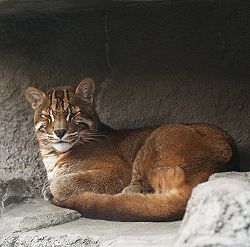
It also seems vaguely possible that we could be dealing with another cat native to Asia, the Asian golden cat (Padofelis temminickii). At a tad less than a meter long, the size is somewhat comparable to the Yamapikarya, and although the golden cat typically has a mostly plain golden coat with limited or faded spots, there is a recessive color variant in China that exhibits very leopard like markings similar to a leopard cat.
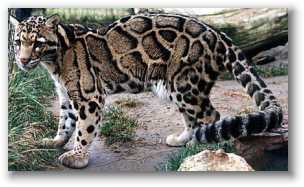
One animal that is perhaps the best candidate for the Yamapikariya is the clouded leopard (Neofelis nebulosa) – directly above and below – of Asia. These cats are not really a type of leopard, but rather are named for their coloration, which is a grayish, yellow, or yellowish grey, with cloud shaped black spots covering the body.
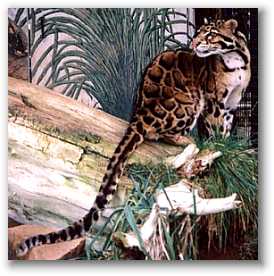
This seems very similar to the coloration that has been reported by eyewitnesses of Iriomote’s Yamapikarya, and the cloud shaped spots could produce the report that described the spots as “oddly shaped.” The Clouded leopard ranges in size from about 2 to 3 feet long, not including the additional length of the tail, which at 2 or 3 feet long is the same length as the body. This size range and the long tail coincides well with what has been described in Yamapikarya sightings. Since the clouded leopard is a highly arboreal animal and considered one of the best climbers in the cat family, it also fits in well with the reports of the animal in trees or climbing.
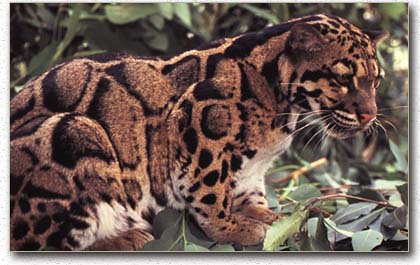
In addition to these physical traits, the range of the clouded leopard covers Eastern and Southeast Asia, including a subspecies in nearby Taiwan (Neofelis nebulosa prachyurus), which is now extinct in the wild. In fact, much of the range of the clouded leopard overlaps that of the smaller leopard cats, which are related to the known Iriomote wildcat.
Since the Iriomote wildcat (above) evolved from leopard cats that became isolated on the the island long ago, it seems not too far a jump to suggest that perhaps clouded leopards in the same range could have inhabited the island as well. The subtropical habitat on Iriomote would be also be very comfortable indeed for these cats, since prey species are abundant and clouded leopards tend to prefer tropical and subtropical forests, as well as mangrove swamps.
The clouded leopard is also an extremely elusive and secretive animal, that is rarely seen even in its known habitat. These cats are so reclusive that they are still little understood, and much of what is known about them has been gleaned from observing captive specimens. They are a good candidate if you are looking for a cat that could remain undiscovered on Iriomote.
This brings us to the question of whether a population of any of these cats could really remain hidden on this island.
Although Iriomote Island sounds small at only 113 square miles in area, much of it is completely uninhabited. There are only around 2,000 permanent residents on the island, who are settled in the coastal areas. Infrastructure is poor, with no airstrip (the island is only accessible by boat), and only one main road, which wraps around the coast to connect the various villages. The interior of the island is thick with primeval subtropical jungle and mangrove swamps so dense as to be practically impenetrable and inaccessible by humans, with no roads and few trails.
It is important to consider that the known wildcat is almost never seen even by long term residents, if at all, even though the cats tend to favor low lying coastal areas where the bulk of the island’s human population live. The Yamapikarya could very possibly be lurking more in the mountainous inland regions well away from humans. Also like the known Iriomote wildcat, the clouded leopard and leopard are predominantly nocturnal and well camouflaged, which when taken together with the remote, impassable jungle habitat, makes it seem at least plausible that a small population could remain concealed on the island.
If the Yamapikarya is indeed one of these cats, it is likely that in their long isolation the cats have evolved uniquely on the island much as the Iriomote wildcat did, making it very possible that it could be an entire new species within its genus, or at the very least a new subspecies. It could very well be that whatever type of cat it is, it could be another animal found only on Iriomote and nowhere else in the world.
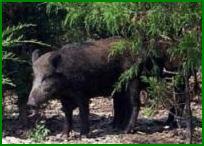
Unfortunately at this point, no physical evidence of the Yamapikarya has been found, but the mystery remains. Something has been seen on the island that does not match with other animals known to be there. Is it a new type of clouded leopard, leopard, or golden cat? Could it even be a new genus of cat? Is it some other type of large cat, an exotic, even perhaps some type of presumably extinct prehistoric cat? Is it a wild boar, a feral cat, or a dog? Or is it perhaps just a figment of people’s imaginations?
The answer to these questions could be out there right now, prowling the jungles of Iriomote Island.
End of Part 2.

About Loren Coleman
Loren Coleman is one of the world’s leading cryptozoologists, some say “the” leading living cryptozoologist. Certainly, he is acknowledged as the current living American researcher and writer who has most popularized cryptozoology in the late 20th and early 21st centuries.
Starting his fieldwork and investigations in 1960, after traveling and trekking extensively in pursuit of cryptozoological mysteries, Coleman began writing to share his experiences in 1969. An honorary member of Ivan T. Sanderson’s Society for the Investigation of the Unexplained in the 1970s, Coleman has been bestowed with similar honorary memberships of the North Idaho College Cryptozoology Club in 1983, and in subsequent years, that of the British Columbia Scientific Cryptozoology Club, CryptoSafari International, and other international organizations. He was also a Life Member and Benefactor of the International Society of Cryptozoology (now-defunct).
Loren Coleman’s daily blog, as a member of the Cryptomundo Team, served as an ongoing avenue of communication for the ever-growing body of cryptozoo news from 2005 through 2013. He returned as an infrequent contributor beginning Halloween week of 2015.
Coleman is the founder in 2003, and current director of the International Cryptozoology Museum in Portland, Maine.

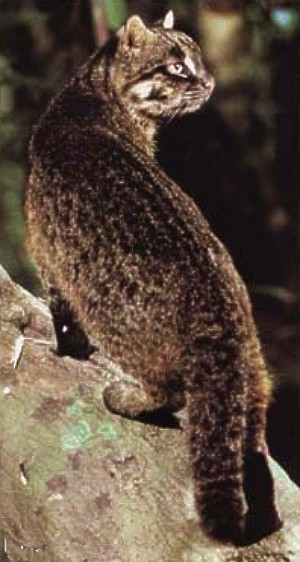









Really fascinating. Your examination of these animals and suggestions as to the question of “just what it could be” doesn’t only answer it but expands our understanding of how these populations come to be. Keeping the exploration in the realm of natural history opens the door and sheds light on a lot of other mysteries which I hope will lead to more of this which is much appreciated. Thanks. Keep up the great work.
Another GREAT post!!
Great article. I’m not surprised no one has caught one of these critters yet, from your description of the environs. I can’t even catch an ordinary housecat in a small townhouse when I’m trying to take them to the vet.
Great post. The Clouded Leopard seems like the best and most likely option due to the giant tail and “oddly shaped” spots, but has the possibility of island dwarfism in regular old leopards been considered?
A really well thought out and researched blog. Excellent work all the way around …again!
Bray_beast also had a great point. Islands have long been known to be hotbeds of speciation as well as tending the larger animals towards dwarfism, so the leopard and the clouded leopard still remain good matches.
Please keep these guest blogs coming, they are great.
bray_beast: just what I was thinking.
If I had to narrow down I’d say two distinct possibilities: a Neofelis (good job, kittenz!) or an uncatalogued leopard subspecies. I think either of those could take down wild boar, although I’d be curious what else is indigenous that might offer possible prey.
And a completely separate species from all other cats known is already there, making that a distinct possibility as well.
Given what I now know about the island, an uncatalogued cat of considerable size – and maybe a primate or two – is not only plausible, but pretty durn likely.
And wild boar is, well, it’s like the numskulls who say that people reporting an upright primate are seeing horses or cows. Rule that one out.
I agree with all the others, here, excellent posting as usual. Well done, well presented. I think most likely you have it right on the supposition about clouded ‘leopards’.
Local hunters mistaking a boar for a cat??? Oh, good grief!
I was very interested to read this account of the yamapikarya, which is evidently one and the same Iriomote mystery felid as the yamamaya, which I documented in my Mystery Cats of the World (Robert Hale, 1989), pp. 109-110. In that, I noted that Wild Cats of the World (David & Charles, 1975) author C.A.W. Guggisberg opined that it may indeed be a form of clouded leopard. Certainly, a version with very elongate ‘cloud’ markings might explain the tigerine stripes that have been reported for this sheepdog-sized crypto-cat.
karlshuker- That is interesting, since I have heard of this mystery cat referred to as the “Yamamaya” before. However, most accounts that I have read refer to it as the “Yamapikarya,” and therefore I decided to use this name for my piece here. The striped markings you mention are interesting because most often it seems the Yamapikarya has been described as looking more like a leopard or a jaguar, with the creature having a spotted coat. I’ve heard of elongated spots or “odd looking” spots reported, but this is the first time I’ve seen any markings described as “tigerine.” If that is indeed the case for some descriptions, then that would certainly be another thing that points to clouded leopards.
bray_beast- Thank you for bringing up island dwarfism. That is definitely something to keep in mind here, since an isolated population of leopards could have grown smaller in size due to evolving in this island habitat. That is a good insight. This has happened with wolves in the Honshu wolf, so I see no reason why it couldn’t happen with cats as well. That sure would be interesting.
DWA- There is a high density of many possible prey species on the island. In addition to the wild boar, there are a great many species of birds, as well as bats, rats, and reptiles such as skinks and box turtles. The known wildcat is known to swim and it is thought to feed on fish, crabs, and freshwater shrimp, so that is another prey possibility. Consider that not only would the cats have adapted to the type of fare on the island, a cat like a leopard is already an opportunistic hunter anyway. They will eat anything they can get their claws on, from insects to antelope and elands. The island offers more than enough for a cat like this to eat.
I must say that I am very happy people are enjoying this piece I did. Thank you very much for the support.
A point that some may not realize: some authorities consider the clouded leopard and the tiger to be much more closely related than other pantherine cats; in fact, a few taxonomists -though it’s a minority – actually assign the tiger to the genus Neofelis. There are some physiological features that tigers and clouded leopards have in common, and one theory about how the tiger got its stripes is that the striping evolved from the beautiful elongate blotched patterns of a clouded leopard ancestor – or, more likely, form a cat that was common ancestor to both.
I don’t know whether I agree with that line of reasoning; I think that more research needs to be done, and much more thought given to the subject, before anyone can be reasonably sure which cat evolved from or alongside which others. But I can see what lead people to postulate the theory.
Also, consider: clouded leopards are, largely, island species. They, like leopards, are also opportunistic hunters – though in the case of clouded leopards, they rely more on the opportunities to take animals of the deeper forest, while leopards preferentially hunt the forest edges – including areas inhabited by humans. Clouded leopards live on mainland southeastern asia too, but their preferred domain seems to be large islands with lots of forest (although recent field research indicates that they are very comfortable hunting on the ground, and in fact may do much of their hunting there). Leopards, while they are the most adaptable of cats and can live practically anywhere, can and do live on islands, but they don’t tend to be quite as secretive as other cats. Their bold nature usually results in them being a known and accepted part of the fauna wherever they are found, because people see them, or traces of them, fairly regularly. (An interesting “aside” to this is that in parts of Malaysia, native people do not, when shown photos of “spotted” leopards, recognize the spotted variety as part of their local fauna, but when shown melanistic leopards, they say “Oh yes, of course, we know that one”. This because in some areas melanistic leopards are the norm and spotted ones occur seldom or never.)
Clouded leopards, on the other hand, are so much creatures of the canopy that they can run headfirst down trees, leap from tree to tree without touching the ground for miles, and even hang by their hind paws from branches. In many areas where they occur, they are seen only very rarely.
As to island dwarfism, larger animals do often develop dwarf forms on islands. This seems to be the case especially when big herbivores become isolated in island habitats. But islands can induce the opposite in some animals : gigantism (Komodo dragon, anyone? 🙂 ) Komodo dragons are not the only examples, of course; many bears that become isolated to island habitats develop gigantism. Cats don’t seem to develop either extreme dwarfism or extreme gigantism in response to island situations. Smaller members of feline species tend to occur in the tropics, while larger members tend to occur in colder temperate regions, but true gigantism or dwarfism is rare in cats.
Given a medium sized, arboreal, felid, possibly retaining primitive features (as do both the Iriomote cat and the clouded leopard, to some extent), my money’s on Neofelis as the prime suspect for the larger Iriomote mystery cat – or maybe – just MAYBE – there’s something REALLY unique out there, a true living fossil, like maybe a living species of Paramachairodus.
Melanistic clouded leopards also occur. To the best of my knowledge, it’s not yet known whether melanism is dominant in the clouded leopard (as it is in jaguars), or recessive (as it is in true leopards), but in some areas, melanistic clouded leopards appear to be locally fairly common.
Here’s a link to the The Clouded Leopard Project, which “is dedicated to the conservation of clouded leopards and the habitat upon which they depend by supporting field research, implementing education initiatives in range countries, and bringing global awareness to clouded leopard conservation issues. ”
Lots of information and lots of photos.
Also check out Bornean Wild Cat & Clouded Leopard Project, which has even more information as well as a slideshow of TERRIFIC trailcam photos from the projects.
Excellent points, as always, Brent.
Same for Kittenz.
I agree that this could be some sort of “living fossil” Leopard.
Almost certainly a “type” of clouded leopard.
And thanks to Dr. Karl Shuker for your posting, as well.
Kittenz- thank you for adding information, as always. Due to space constraints, I was not able to go into all of the details I wanted to with this article, so your information is a welcome supplement.
You underscore many of the points I made in my article above. The clouded leopard is very reclusive compared to the leopard, and it is one of the reasons I tend to think that Neofelis is a good candidate for a felid able to remain hidden. Leopards tend to be bolder and I would think that more sightings would have cropped up on such a relatively small island if that were the case. Also, as I mentioned in my article, the clouded leopard is widely considered one of the best climbers in the cat family, in fact that is the reason for such a long tail, as it helps to promote added balance. This highly arboreal nature would undoubtedly contribute to its remaining elusive, as well as cause the sightings that have happened in trees.
I suppose I should throw some information in on island dwarfism and island gigantism as well, since it has been brought up here and I did not have the space to touch on it before.
Island dwarfism is a condition mostly often found in mammals, and occurs due a range of co-contributing factors and constraints. It is largely due to selection in reaction to environmental stresses and a limited gene pool within a population in an island ecosystem. For instance, island dwarfism is likely to happen when there is a food decline, and therefore smaller animals are more likely to survive due to more modest food requirements. In a smaller gene pool, these environmental pressures are going to have a more profound effect on the species. You can think of it like throwing a rock in the water. In a small puddle, the ripples are going to have more of an effect on the overall body of water in contrast to throwing the rock into a large lake.
Island dwarfism need not even happen on an island in the traditional sense of the word. Ecologically speaking, any isolated environment surrounded by unlike environments can be technically considered more or less an island, and be subject to the same effects and constraints on the wildlife. For instance, you still have populations that are geographically isolated, surviving within a limited ecosystem and prevented from external breeding with outside populations.
Island gigantism also can happen in island environments, one example being the Komodo dragon that Kittenz brought up. There are many other examples, such as the Galapagos giant tortoises, the weta of New Zealand, and the extinct elephant birds of Madagascar. In island gigantism, the contributing factors are a bit different from dwarfism. Where island dwarfism is largely due to environmental constraints, island gigantism is caused by a lack of constraints. This is why it most often occurs in herbivores. On an island with plentiful food resources, and a lack of natural predators, the animal can afford to grow larger over many generations.
As a general rule (but not always), herbivores tend towards island gigantism, whereas carnivores are more likely to display island dwarfism. Hopefully this information will shed some more light on these processes.
Kittenz, I sure hope you enjoyed this article. I was even going to dedicate it to you, but didn’t know if that would seem cheesy. I actually had you in mind when I was writing it, so I’ll be pleased if you’ve enjoyed this.
Aw, thanks, mystery_man 🙂 . I’ve enjoyed this post very much. ANY story about the possible existence of a previously unknown cat catches my fancy, and stories as well thought out and written as this are especially enjoyable.
I really hope that there is at least confirmation, at some point, that a larger feline is also endemic to Iriomte, even if it turns out to be a known and described species such as a golden cat, marbled cat, or clouded leopard.
But I have always wished for (knowing how unscientific it is to “wish”; what can I say, can’t a scientist also be a romantic and a dreamer?), anyhow, I have longed for sabertooth cats, living wild. from their day to this, in some remote area, waiting to be discovered. Neofelis ssp. are almost sabertoothed; they were once thought to be possibly congeneric with Paramachairodus. That has turned out not to be the case, but I don’t discount the possibility of Paramachairodus, or some other smallish-to-midsized sabertooth cat, living to the present day in some isolated area such as Iriomote.
Thanks for the terrific blog. I am still looking for the article that I saw a few years back, which included photos, from hidden cameras, of a wild melanistic clouded leopard. I do not recall where I saw the article, except that it was a nature magazine or a nature article in a science magazine. I will find it one day and when I do I’ll post it. Because the melanistic clouded leopard looked even more like a sabertooth cat than the normally patterned ones do.
Kittenz- Yes, I’ve read that about the clouded leopard, and in fact I understand that it has the longest teeth in relation to skull size of all extant cats, something keeping very much with the common image of the sabertoothed cats.
I’m happy you enjoyed this blog. I tell you, I made sure to be sure I had my facts straight on all these cats before posting because I knew you would call me out on it if I got anything wrong. 🙂 An interesting thing is that I wrote these both and split it into halves, spacing out their appearance here on Cryptomundo, so Part 2 was already finished when Part 1 went up, yet you are the only one who guessed Neofelis , which is my top contender. I guess that figures with you, but you should get some kind of prize. lol 🙂
By the way, a scientist can wish! I’m quite the dreamer myself. After all, we’re only human like everyone else. 😉
On a side note, one thing that I really thought about a lot when doing research on Yamapikarya sightings was the amount of reports by wild boar hunters. There are quite a few accounts made by hunters who were out setting or checking wild boar traps at the time of the sightings. Above and beyond the tendency for these hunters to go deep into the forests, it got me wondering if perhaps the cats were also drawn to the wild boar traps as a chance for an easy meal. The availability of a boar trapped and just sitting there for the taking could be one reason why the cats would be spotted so often in the vicinity of these traps. At the very least, the commotion the boar would make seems likely to command the attention and curiosity of any large cat wandering through the area. They may even make the rounds in areas where they know traps have been before. It seems to me that this type of thing would be practically irresistible to an opportunistic hunter.